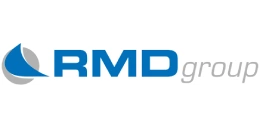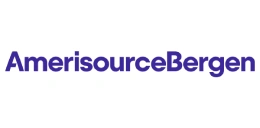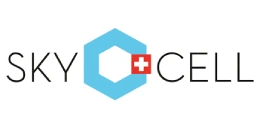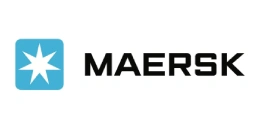Economic Analysis of Diethylenetriamine (DETA) Manufacturing Process: A Comprehensive Cost Model
_11zon.webp)
Diethylenetriamine (DETA) is a colorless, hygroscopic organic chemical compound of the ethyleneamine group having the chemical formula HN(CH2CH2NH2)2. It is a triamine that contains two primary amine groups and one secondary amine group, thus imparting to it a highly reactive molecular structure to be used in a number of industrial processes. DETA is mainly manufactured by the reaction of ammonia with ethylene dichloride or by the amination of monoethanolamine in the presence of a catalyst. It smells strongly of ammonia and is soluble in polar solvents and water. Its chelating potential is high, it is resistant to alkali, and it is multifunctional, so it is common to be used in epoxy curing agents, corrosion inhibitors, paper chemicals, and as a surfactant intermediate to synthesize surfactants, fuel additives, and agrochemicals. The global diethylenetriamine (DETA) market was reached 38.1 Million Tons in 2024. According to IMARC Group, the market is projected to reach 58.2 Million Tons by 2033, growing at a CAGR of 4.80% from 2025 to 2033. Global demand for diethylenetriamine (DETA) is being fueled by its increased application in high-performance uses in various industries. One of the key drivers is the growing need for epoxy curing agents in the coatings, adhesives, and composites markets, where DETA improves mechanical strength and chemical resistance. The increasing application of chelating agents in water treatment and cleaning products also increases its consumption. The agrochemical industry is also growing with the demand for food globally, wherein DETA is an important intermediate in herbicide formulations. In addition, application of DETA in the oil & gas sector for corrosion inhibitors and scale removal chemicals contributes to its market expansion, particularly with the increasing global energy demand. Automotive lightweighting and electronics development, in which polymers and resins derived from DETA are employed, also contribute to greater demands. Green chemistry solutions are also encouraging chemical producers to look for more efficient and greener processes with DETA, cementing its place in green chemistry solutions.
Case Study on Cost Model of Diethylenetriamine (DETA) Manufacturing Plant
One of our clients reached out to us to conduct a feasibility study for setting up a large-scale diethylenetriamine (DETA) manufacturing plant. We developed a comprehensive financial model for the setup and operation of a proposed diethylenetriamine (DETA) manufacturing plant in Arizona, United States. This plant is designed to produce 10,000 tons of diethylenetriamine (DETA) per day.
Manufacturing Process: The production of diethylenetriamine (DETA) is a multi-stage, integrated chemical process aimed at high yield and purity. It starts with MEA Recovery/Ammonia Recovery, which recycles and reuses unreacted monoethanolamine (MEA) and surplus ammonia from previous cycles, making a drastic reduction in environmental footprint and improvement in resource utilization. These recycled feedstocks are then fed into a continuous flow fixed bed catalytic reactor, the heart of the synthesis process. In this, MEA is reacted with ammonia in the presence of a selective catalyst at high pressures and temperatures to enable the synthesis of ethyleneamines, such as DETA, using a regulated amination reaction. After synthesis, ammonia stripping is performed to remove and recover the remaining ammonia from the reaction stream so that it can be recycled in upstream operations. This process is crucial to reduce loss of ammonia and conform to environmental regulations. The blend is then subjected to azeotropic distillation, a complex separation method employed to separate DETA from co-products like monoethylenediamine (EDA) and triethylenetetramine (TETA). The method relies on differences in boiling points and azeotrope formation for the purification of the desired product. Dehydrogenation could be used in certain operations, where by-products or intermediates of specific nature are converted to enhance selectivity or yield of target amines such as DETA. The last step of processing could involve PIP Flaking, especially when cyclic amines such as piperazine (PIP) are generated as co-products. In this process, PIP is cooled and hardened in flakes form so that they can be handled and packaged easily. As a whole, this closed loop and integrated process ensures maximum conversion, least waste, and highest product purity and is thus ideally suited for the large-scale manufacture of DETA utilized in epoxy curing agents, oil field chemicals, and chelating agents.
_11zon.webp)
Mass Balance and Raw Material Required: The primary raw materials used in the diethylenetriamine (DETA) manufacturing plant include Monoethanolamine (MEA) and ammonia. For a plant producing 1 ton of diethylenetriamine (DETA), 1.32 ton of Monoethanolamine (MEA) and 0.17 ton of ammonia.
Techno-Commercial Parameter:
- Capital Investment (CapEx): Capital expenditure (CapEx) in a manufacturing plant includes various investments essential for its setup and long-term operations. It covers machinery and equipment costs, including procurement, installation, and commissioning. Civil works expenses involve land development, factory construction, and infrastructure setup. Utilities such as power, water supply, and HVAC systems are also significant. Additionally, material handling systems, automation, environmental compliance, and safety measures are key components. Other expenditures include IT infrastructure, security systems, and office essentials, ensuring operational efficiency and business growth.
- Operating Expenditure (OpEx): Operating expenditure is the cost incurred to operate a manufacturing plant effectively. Opex in a manufacturing plant typically includes the cost of raw materials, utilities, depreciation, taxes, packing cost, transportation cost, and repairs and maintenance. The operating expenses are part of the cost structure of a manufacturing plant and have a significant effect on profitability and efficiency. Effective control of these costs is necessary for maintaining competitiveness and growth.
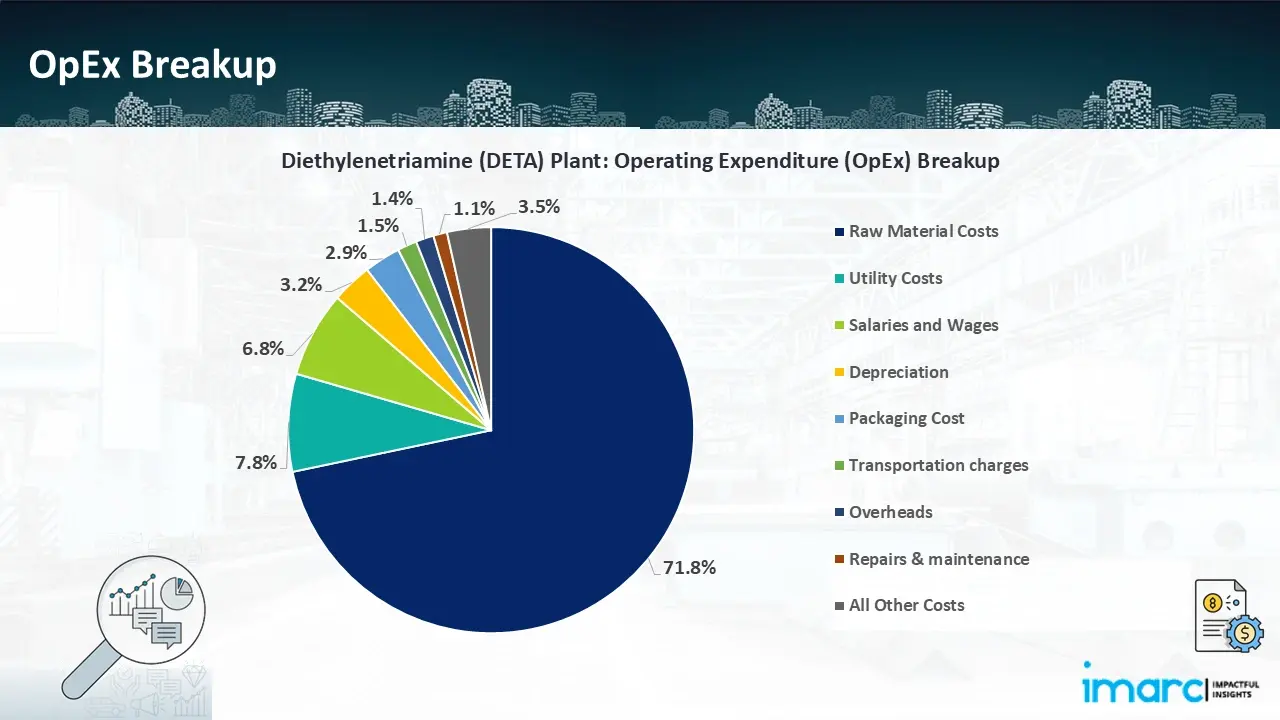
- Profitability Analysis Year on Year Basis: The proposed diethylenetriamine (DETA) plant, with an annual capacity of approximately 10,000 tons of diethylenetriamine (DETA)s, achieved an impressive revenue of US$ 23.4 Million in its first year. We assisted our client in developing a detailed cost model, which projects steady growth, with revenue rising throughout the projected period. Moreover, gross profit margins improve from 10.9% to 16.1% by year 10, and net profit rises from 2.8% to 10.6%, highlighting strong financial viability and profitability.
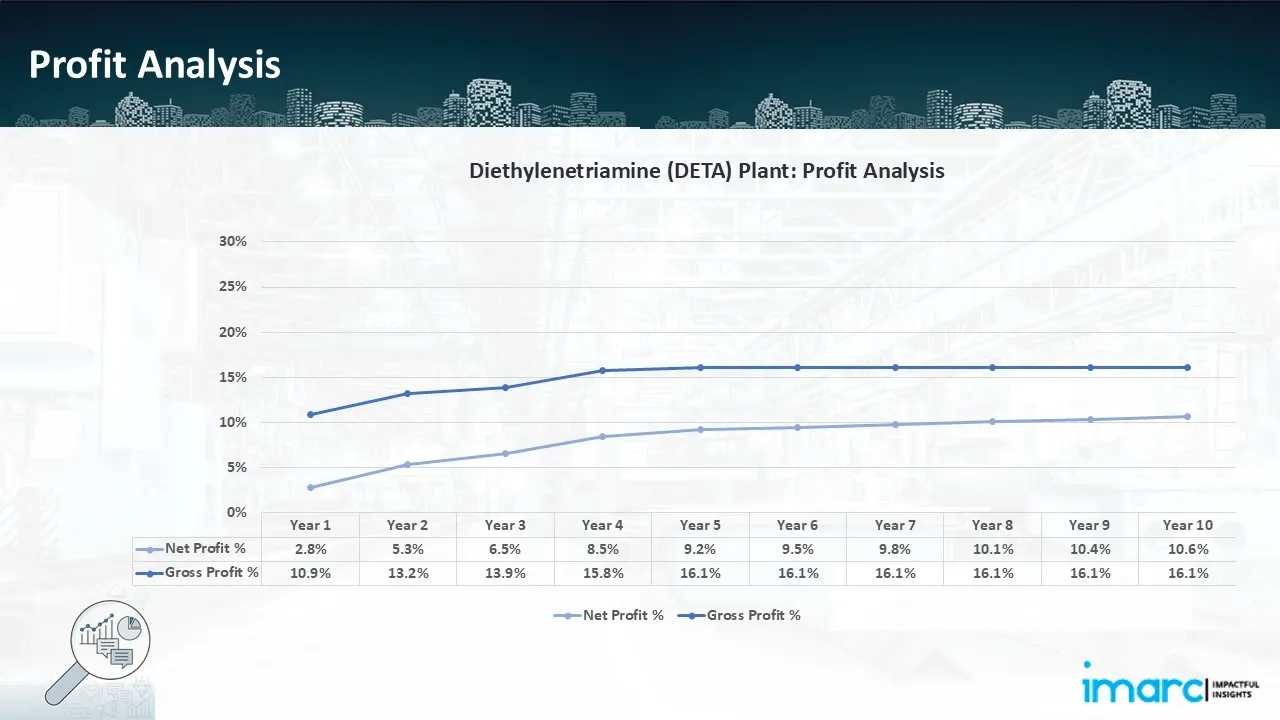
Conclusion
Our financial model for the diethylenetriamine (DETA) manufacturing plant was meticulously developed to meet the client’s objectives, providing an in-depth analysis of production costs, including raw materials, manufacturing, capital expenditure, and operational expenses. By addressing the specific requirements of producing 10,000 tons of diethylenetriamine (DETA) annually, we successfully identified key cost drivers and projected profitability, considering market trends, inflation, and potential fluctuations in raw material prices. This comprehensive financial model equipped the client with valuable insights for strategic decision-making, demonstrating our commitment to delivering high-quality, client-focused solutions that ensure the long-term success of large-scale manufacturing ventures.
IMARC's Financial Model Expertise: Helping Our Clients Explore Industry Economics
IMARC is a global market research company that offers a wide range of services, including market entry and expansion, market entry and opportunity assessment, competitive intelligence and benchmarking, procurement research, pricing and cost research, regulatory approvals and licensing, factory setup, factory auditing, company incorporation, incubation services, recruitment services, marketing and sales.
Under our factory setup services, we assist our clients in exploring the feasibility of their plants by providing comprehensive financial modeling. Additionally, we offer end-to-end consultation for setting up a plant in India or abroad. Our financial modeling includes an analysis of capital expenditure (CapEx) required to establish the manufacturing facility, covering costs such as land acquisition, building infrastructure, purchasing high-tech production equipment, and installation. Furthermore, the layout and design of the factory significantly influence operational efficiency, energy consumption, and labor productivity, all of which impact long-term operational expenditure (OpEx). So, every parameter is covered in the analysis.
At IMARC, we leverage our comprehensive market research expertise to support companies in every aspect of their business journey, from market entry and expansion to operational efficiency and innovation. By integrating our factory setup services with our deep knowledge of industry dynamics, we empower our clients to not only establish manufacturing facilities but also strategically position themselves in highly competitive markets. Our financial modeling and end-to-end consultation services ensure that clients can explore the feasibility of their plant setups while also gaining insights into competitors' strategies, technological advancements, and regulatory landscapes. This holistic approach enables our clients to make informed decisions, optimize their operations, and align with sustainable practices, ultimately driving long-term success and growth.
Our Clients
Contact Us
Have a question or need assistance?
Please complete the form with your inquiry or reach out to us at
Phone Number
+91-120-433-0800+1-201-971-6302
+44-753-714-6104
